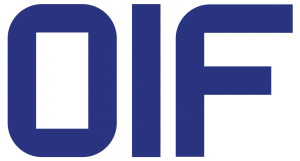OIF Q2 Technical and MA&E Committees Meeting Wraps with CEI-224G-Linear Project Launch, New CMIS White Papers and Requirements for Energy Efficient Interfaces
Interoperability work continues in key project areas, including 1600ZR/1600ZR+ and EEI specifications
Fremont, Calif. – June 13, 2024 – OIF’s Q2 Technical and Market Awareness & Education (MA&E) Committees meeting, held May 7-9 in Athens, Greece, concluded with the launch of a Common Electrical I/O (CEI) CEI-224G-Linear project and the publication of two Common Management Interface Specification (CMIS) white papers.
Additionally, the Physical Layer User Group (PLUG) Working Group released a new system vendor requirements document for Energy Efficient Interfaces (EEI).
The event had robust attendance from member companies and featured discussions and debates on advancements in optical networking technology interoperability, as well as a guest speaker from ETH Zürich.
The meeting included ongoing efforts in many technical work areas, including 1600ZR/1600ZR+ and EEI, underscoring OIF’s leadership in tackling the complex challenges facing today’s high-speed optical networks.
“OIF’s commitment to interoperability standards and tackling technological challenges was evident at the Q2 meeting,” said Nathan Tracy, OIF President, and TE Connectivity. “The high attendance, start of the CEI-224G-Linear project, CMIS white papers, and the vendor requirements document for EEI, alongside David Moor’s insightful presentation on advanced transceiver design, underscore our leadership in promoting industry-wide collaboration and innovation.”
New Project
The new CEI-224G-Linear project will build on the approach of CEI-112G-Linear in terms of specification methodology. It will support 224G full linear optical modules for next-gen applications (e.g., Ethernet, Ultra Ethernet Consortium (UEC), Artificial Intelligence/Machine Learning [AI/ML]) with low power, cost/complexity and latency. The TP1/TP1a and TP4/TP4a electrical specifications will enable up to 224G full linear optical modules for Linear Pluggable Optics (LPO), co-packaged optics (CPO) and Near Package Optics (NPO), supporting next-generation application requirements.
“The CEI-224G-Linear project will represent significant progress in our technological capabilities, weaving the precision of CEI-112G-Linear with groundbreaking innovations,” said Mike Li, OIF Board Member and Intel. “By enabling 224G full linear optical modules and leveraging the advanced 224G DSP SERDES architecture and technology, this initiative is poised to redefine the landscapes of Ethernet, UEC and AI/ML applications. As we embrace lower power, cost and latency, this project is a giant step forward in next-generation computing and connectivity driven by AI/ML.”
New White Papers
Common Management Interface Specification (CMIS) White Paper on Management of Smart Optical Modules
This white paper explores how the DWDM functions, parameters and operational aspects of “smart” optical pluggable modules can be handled more efficiently to address various challenges. It introduces an alternative control paradigm for optical modules that decouples optical layer control from packet layer control and from host software and packet controller software development and outlines the pros and cons of this approach. This paradigm is called “host independent management,” enabling advanced capabilities of smart optical modules via additional management methods. The white paper is available for download here.
CMIS-Based Out-of-Band Messaging for Link Training
This white paper provides background on link training and a proposed message catalog by which any transmit SerDes can be trained initially (or tuned adaptively while in service) based on the needs of the corresponding receive SerDes, with the help of message exchange.
It promotes out-of-band (OOB) messaging via the ubiquitous CMIS management link as a flexible solution for exchanging link training messages. The technical specifications of the messaging facility and the representation of the messages will be defined in a CMIS-LT supplement. Potential CMIS-LT applications could include CEI-112G Very Short Reach (VSR), Extra Short Reach (XSR), XSR+, and Medium Reach (MR), IEEE 802.3 AUI C2M links, Fibre Channel, InfiniBand, Optical Transport Network (OTN), etc. Download the white paper here.
Requirements Document
System Vendor Requirements Document for Energy Efficient Interfaces
In today’s fast-paced technological landscape, where data processing and communication demands for AI continue to soar, pursuing energy-efficient solutions is critical. This requirements document for EEI is a direct result of engaging with end users to understand their needs and expectations. It seeks to prioritize applications and establish fundamental criteria for the next generation of energy-efficient electrical and optical link projects and specifications.
Through these discussions, it’s clear the most pressing need for EEI is in high-density application scenarios. The document outlines critical requirements to achieve optimal performance for various applications that necessitate the utilization of such interfaces. These requirements encompass a range of factors, including energy targets, latency targets, desired form factors, degrees of interoperability, traffic types and more.
Download the requirements document here.
Guest Speaker
The event was further highlighted by guest speaker David Moor, a representative from ETH Zürich and the FLEX-SCALE consortium. Moor discussed the development of an optical digital-to-analog converter (oDAC) supporting Tbps+ data rates with lower power per bit than conventional modulation methods. According to Moor, this design utilizes currently available electronics and photonic devices and is well suited to support high-capacity transport with improved power efficiency.
For more information about the OIF and to access the latest white papers, please visit OIF’s website.
About OIF
OIF is where the optical networking industry’s interoperability work gets done. With more than 25 years of effecting forward change in the industry, OIF represents the dynamic ecosystem of 150+ industry leading network operators, system vendors, component vendors and test equipment vendors collaborating to develop interoperable electrical, optical and control solutions that directly impact the industry’s ecosystem and facilitate global connectivity in the open network world. Connect with OIF on LinkedIn, on X at @OIForum and at http://www.oiforum.com.
PR Contact:
Leah Wilkinson
Wilkinson + Associates for OIF
leah@wilkinson.associates
703-907-0010

